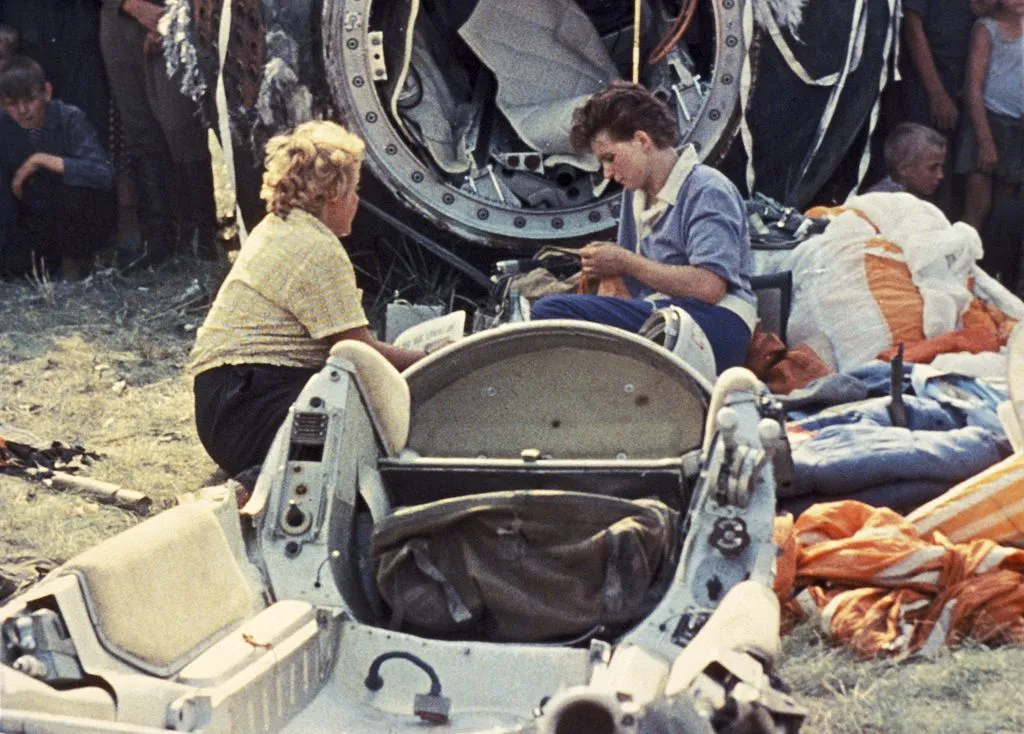On 16 June 1963, a Soviet factory worker with a passion for parachuting became the first woman to fly in space.
Born on 6 March 1937, Valentina Tereshkova was the daughter of a tractor driver who died during World War II.
Upon reaching adulthood, Tereshkova worked in a textile factory, continuing to study in her spare time.
Unlike most future astronauts, she did not spend her childhood dreaming of space. Instead, it was a different passion that decided her path – parachuting.
She began the hobby in 1959 after seeing an advertisement for a local club, and by the early ’60s she was jumping competitively.

The Space Race
At the time, the Soviet Union dominated the Space Race.
It had successfully put the first man, Yuri Gagarin, into space, but there were concerns that the US might launch a female astronaut just so that they could claim that ‘first’.
"We cannot allow that the first woman in space will be American," Nikolai Kamanin, director of cosmonaut training, wrote in his diary, and soon began seeking out potential candidates.
Previous cosmonauts had been drawn from the air force, but with no female pilots, Kamanin instead looked for experienced parachutists.
They would need to be under 30, as well as under 5 foot 7 inches (1.7m) in order to fit into the single-person Vostok crew capsules.
Tereshkova was one of five women who fitted the criteria and underwent cosmonaut training.
The women were put through tests to ensure their bodies could cope with the physical demands of spaceflight, were taught to fly MiG jets and instructed on the workings of their spacecraft.

Selecting Tereshkova
Once training was complete, the question became which of the five women would fly.
As it had been with Gagarin before her, it was Tereshkova’s origin story that gained her her seat on Vostok 6.
She was the embodiment of the Communist ideal: the daughter of a farmer who had died for his nation, who had educated herself, proving anyone – man or woman – could rise through hard graft.
It was for this that Kamanin referred to Tereshkova as "Gagarin in a skirt".
Her flight launched on 16 June 1963 with the exuberant yell of "Hey sky, take off your hat. I’m
on my way!"
Part of her mission was to look out of the window and take photos of the atmosphere, which would be used to study particles in the upper stratosphere.
"I see the horizon," she said looking out from the cockpit. "A light blue, a beautiful band. This is the Earth. How beautiful it is! All goes well."
Despite her upbeat words, the cramped Vostok capsule meant Tereshkova was uncomfortable for most of the flight.
A combination of zero gravity and unpalatable food meant she often felt ill.
Then, after she vomited she found out that the ground crew had forgotten to include toothpaste with the toothbrush they’d packed for her.
Despite this, Tereshkova handled the craft well.

Tereshkova orbits the Earth
On her first orbit, Tereshkova passed within five kilometres of Vostok 5, which had launched just two days before her, the manoeuvre testing several procedures that would allow future spacecraft to dock together.
She returned to Earth three days and 48 orbits later, narrowly avoiding disaster when she noticed that
the Vostok’s guidance programme was set to ascend from orbit, rather than descend.
As with all Vostok missions, she ejected before impact and parachuted to the ground, ending her space journey using the very skill that had got her there.
In the weeks and months that followed, Tereshkova became a celebrity, with several parades in her honour.
Behind the scenes, though, there was a very different sentiment.
While there had been plans for the other female cosmonauts to fly, the nation’s lead spacecraft designer Sergei Korolev put a stop to them, citing the fact that one of the candidates already had a family.
"They forbade me from flying, despite all my protests and arguments," Tereshkova said years later. "After being once in space, I was keen to go back there. But it didn’t happen."
Though the female cosmonauts disagreed with the decision, and wrote to the central party committee, their opinions were ignored.
The Soviets had claimed their ‘first’.

Cosmonaut women
After the flight, Tereshkova’s career became centred around touring the globe, and she was the most frequently requested cosmonaut of the entire Soviet spaceflight programme.
However, her success meant she never flew again. When Gagarin died in 1968 in a plane crash, the Soviet Union realised it couldn’t risk losing another celebrity, and she was grounded.
In 1963, she married fellow astronaut Andriyan Nikolayev.
Their daughter, Elena, was the subject of much curiosity, as she was the first person born to two people who had been in space. They divorced in 1982.
By the time NASA advertised for the 1978 astronaut class, the first intake to include women, the Soviets had yet to put another woman in space.

Not wanting to be outdone again after Apollo’s triumph, the next class of cosmonauts included nine women along with four men.
Tereshkova herself was allowed to requalify as a cosmonaut.
In August 1982, fellow class member Svetlana Savitskaya travelled to the Salyut 7 space station, just beating Sally Ride to be the second woman in space.
However, she was the only woman from the class to fly in space and, to date, in total only five of Russia’s cosmonauts have been women.
Politically active throughout her life, Tereshkova has held many offices since retiring from spaceflight and currently sits in the Russian parliament, the Duma.
This article originally appeared in the June 2023 issue of BBC Sky at Night Magazine.
